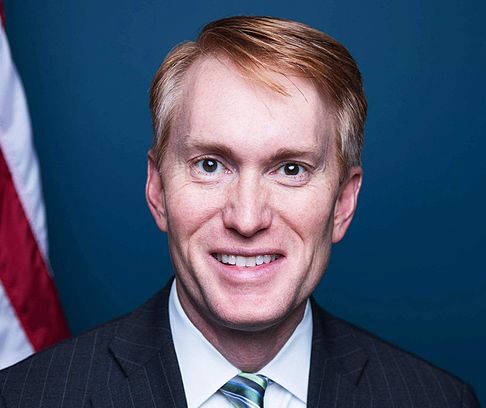Senator James Lankford (R-OK) joined Senator Steve Daines (R-MT) to lead a group of their Senate Republican colleagues in sending a letter to the Congressional Budget Office (CBO), highlighting their concerns with the rising cost of servicing the nearly $34 trillion national debt.
“Driven by out-of-control federal spending and rising interest rates, the US spent $659 billion on servicing the federal debt in Fiscal Year 2023, a $184 billion increase from the previous year and nearly double the cost from just three years ago. Since March 2022, the Federal Reserve has raised interest rates eleven times, pursuing such an aggressive rate-hiking campaign in an effort to combat the out-of-control inflation that has hung over the US economy for years as a result of trillions of dollars in reckless partisan spending passed by congressional Democrats and signed into law by President Biden. Future rate hikes and higher-for-longer rates are likely as elevated inflation remains a major concern for American households who continue to see the purchasing power of their wages erode,” the Senators wrote.
Senators John Cornyn (R-TX), Mike Crapo (R-ID), Bill Hagerty (R-TN), John Thune (R-SD), Thom Tillis (R-NC), John Barrasso (R-WY), Bill Cassidy (R-LA), Marsha Blackburn (R-TN), Katie Britt (R-AL), Cynthia Lummis (R-WY), Ron Johnson (R-WI), and Todd Young (R-IN) joined Lankford and Daines in sending the letter.
View the full text of the letter HERE or below:
Dear Director Swagel:
We write seeking an updated assessment from the Congressional Budget Office (CBO) of the effects of decades-high interest rates on the net interest costs of servicing the nearly $34 trillion, and growing, federal debt, and effects of elevated consumer price inflation that continues to remain above the Federal Reserve’s two percent target.
In Fiscal Year 2023, the federal government ran a deficit of $1.7 trillion, $320 billion more than the previous fiscal year. It was the largest annual budget shortfall ever recorded outside of the COVID-19 pandemic years and effectively double last year’s deficit. In just the first half of Fiscal Year 2024, the Treasury Department is projected to borrow nearly $1.6 trillion. During the pandemic years, debt held by the public increased by a staggering $9.5 trillion. According to CBO’s 2023 long-term budget outlook, over the next 30 years, debt held by the public is set to surpass its historic high of 107 percent of GDP by 2029, and climb to 181 percent of GDP by 2053.
Driven by out of control federal spending and rising interest rates, the US spent $659 billion on servicing the federal debt in Fiscal Year 2023, a $184 billion increase from the previous year and nearly double the cost from just three years ago. Since March 2022, the Federal Reserve has raised interest rates eleven times, pursuing such an aggressive rate-hiking campaign in an effort to combat the out-of-control inflation that has hung over the US economy for years as a result of trillions of dollars in reckless partisan spending passed by congressional Democrats and signed into law by President Biden. Future rate hikes and higher-for-longer rates are likely as elevated inflation remains a major concern for American households who continue to see the purchasing power of their wages erode.
With the market yield on 10-year Treasury securities reaching near 20-year highs and the federal government continuing to add roughly $2 trillion to the national debt every year, the economic pain yet to come is hard to imagine. The cost of interest, which is the fastest growing part of the federal budget, will exceed $10 trillion over the course of the next decade and exceed the entirety of the US defense budget by as early as 2027. As the cost of servicing the national debt continues to grow, discretionary spending will continue to decline, reducing lawmakers’ ability to fund critical projects for taxpayers. By 2051, interest payments will be the single largest item in the federal budget, surpassing Social Security, Medicare, Medicaid, and all other mandatory and discretionary spending programs.
With the evident unsustainability of the nation’s fiscal course, elevated inflation, and interest rates, which continue to rise, please provide responses to the questions below:
- How much would each percentage point increase in inflation above 3 percent cost a middleclass American worker?
- Does CBO believe that both the ten-year Treasury yield and the average rate paid on federal debt over the next two years will be realized at rates that CBO projected in its June 2023 long-term budget outlook?
- What is CBO’s most current projections for GDP growth for a one-year period, two-year period, and ten-year period?
- For every GDP growth point that misses the mark, how will this increase the deficit?
- If GDP growth remains stagnant for the next two years, how would this increase the deficit?
- Can CBO offer its projections of the amount by which the federal deficit will rise if 10-year Treasury yield rates hit 4 percent and persist at such a rate over the next 5 and 10 years?
Given the upcoming two-day meeting of the Federal Open Market Committee on December 12th and 13th at which the Federal Reserve may choose to raise interest rates for a twelfth time, please reply as soon as possible after December 13th so that lawmakers and the public can be equipped with the most accurate data possible when making policy decisions.
Sincerely,
















